QuestionHi,
My leopard gecko is about 10 years old now. Most of of that duration i had used a crushed almond shell substrate for his tank. I just recently found out that it is not good for him if he ingests it, and i was told that a good alternative is calcium sand, as it wont harm him if ingested. I have had it for about a week, and today i just noticed that it looks like there is a grain of it in his eye. Is there any way for me to safely remove it, or should i take him to a vet? It doesn't really seem to be bothering him at all, but i still thought it would probably be best to remove it.
On a completely separate topic. I was not able to bring him with me to college so my aunt offered to take care of him for me while i was there. While she had him she did not give him enough moisture during shedding so now he is missing the tips of most of his toes. :( Will they grow back?
AnswerHi Lee,
First apologies for late reply...I was having a few computer issues that I finally got resolved!
I've included a basic care sheet for you on leopard geckos. In it there are links to finding a vet able to treat reptiles.
Congrats on the age of your leo!! Its nice to see that they are living longer in captivity...and hopefully you will have him for another 10 plus years!!
The calci sand is very bad to use also. It can cause impactions and blockages. For leos, its best to use slate tiles, newspaper or paper towels. One reason the calcium sand is deadly is that the leos think they are getting their calcium from it and will lick at it(as any other loose substrate) and it does not "break down" as the companies claim. Do remove it for the well being and safety of your leo.
With sand in his eye, you may be able to mist him with sterile water and it remove it..or he may be able to "blink" it out. If you still see it there in a day, I would take him to a vet so the vet can properly irrigate the eye and most likely give you an antibiotic eye ointment in case there was any scratching done to the eye.
Sorry to say...toe tips won't grow back if it was above the nails. Sometimes if the nail bed was not involved they can grow back...its a wait and see on that one. It can take months and months to grow back if the nail bed wasn't involved.
Again, sorry for the delay in my reply!!
BASIC CARE FOR A LEOPARD GECKO
Leopards are pretty easy to care for but they do need
special care. Here are some of the basic needs of your
gecko.
HOUSING: The need to have at least a 20 gallon long tank for
one Leo. This needs to have a secure fitting screen top...they can be quite the escape artists!!! They need to have a humid hide box.You can make
this with something as simple as a small plastic dish with a
hole cut in one side and a small mesh bag filled with some
Sphagnum moss, coconut bark or Peat moss that you mist.
I made mine out of the small plastic folgers coffee containers...I cut an opening in the lid..and put the moss in..they LOVE it. I use the terrarium moss in mine.
I use that on the warm side of the tank. Be sure to provide a cool hidebox on the other end. I also provide a mid temperature hide...which is in the middle of the tank.I use the critter caves which you can purchase. NOT the ones that have heat in them!!!!
Provide secure climbing areas for your gecko. Fake plants, rocks and branches are all fine to use. be sure there are no wires or sharp ends to any fake plants you use.
SUBSTRATE:(that's the stuff on the floor of your tank) News
paper, lizard carpet or paper towels work great and are easy
to clean and are much safer than any loose substrate. Sand or other loose substrate is not recommended as that they can be deadly to the leo when it is ingested(eaten, even by accident while eating their insects)...
TEMPERATURES: They need a warm area of 88-92 degrees and a
cooler area in the upper 70s, low 80s. At night their
temperature can drop to the low to mid 70's.
Never use a hot rock for a leopard gecko...or any reptile.
They can severely burn any reptile. You can use a heating
pad under the tank,under tank heater, or you can use a regular household
lightbulb in a dome fixture with a ceramic socket in it to
keep the warm area at the 88-90 degree area.At night, no white light. If room temperatures stay above 70 degrees, no extra night heat is needed. The undertank heater or heating pad should cover about 1/3 of the tank....be sure to raise the tank up about 1/4-1/2 inch off the stand when using an undertank heat source to prevent heat build up which can cause the glass to break and hot spots in the glass. Be sure to have a good layer of newspaper, carpeting or, even a thin flat rock(such as tile) on top the area that the undertank heat source is placed...if you use a thin rock or tile, it helps to distribute the heat very well.
You can use the special nighttime lights that are designed for reptiles. I like using a ceramic heat emitter on a thermostat for nighttime heat.
DO NOT use black lights or party lights as they can cause eye damage!!!!
The wattage you use will vary based on room temperature and size of tank.
LIGHTING: Leopard geckos do not need UVB lighting but it does not hurt them to give them uvb. They should have some type of light during the day, be it a uvb tube, regular florescent light, reptile day light or regular household lightbulb. NO white lights at night!!!
FEEDING: Geckos should not be fed crickets or other insects that are bigger than the space between their eyes. Generally, hatchlings can be fed more than once a day,juvys can be fed twice a day, adults are fed once daily or every other day, in the early evening. Crickets and other food items such as silk worms, super, and an occasional treat of a wax worm, need to be dusted with a calcium supplement two times a week and also they should have a small dish of calcium in their tank. I use the lid of a milk jug for the little dish of calcium in their tank. For dusting the insects, Use a calcium with no added phosphorus.
Insects must be gut loaded(fed) for at least 48 hours prior to feeding your gecko. Remove any uneaten crix or superworms after 15-20 minutes..... Place a piece of cut potato in the tank so that if you have missed any uneaten insects, they will eat the potato instead of nibbling on your gecko!!!
*************You have to be sure to feed your crickets and insects the right foods
before feeding them to your gecko. If your crickets/insects are not healthy and well fed, your gecko will not get the nutrition
he needs. You can gut load your crickets and insects greens, veggies, cereals or specially designed commercial foods for crickets or the insects you are feeding. ************
Be sure to have a small dish of clean water for your gecko
at all times!!
You can offer them some baby food or fruits on occasion ...
Mine will even eat a small piece of watermelon now and then.
WATER: always provide a dish of drinking water. If you choose to mist your gecko to drink, its best to not get the tank too wet as that they do not do well with higher humidity. Sometimes its better to take your leo out of their tank to mist them to get them to drink!!!
HANDLING: Some geckos enjoy being held...others prefer not to be handled at all. Be sure to be very gentle when holding your leo and NEVER grab them by the tail! Their tails are extremely fragile and will break.
I do suggest finding a vet that can treat reptiles BEFORE you actually need one!!! To find a vet that is able to care for reptiles:
http://www.anapsid.org/vets
http://www.arav.org/Directory.htm
For more information on leopard geckos:
http://www.thegeckospot.com/leocareindex2.html
http://www.drgecko.com
If you have any more questions, or don't understand something, please let me know

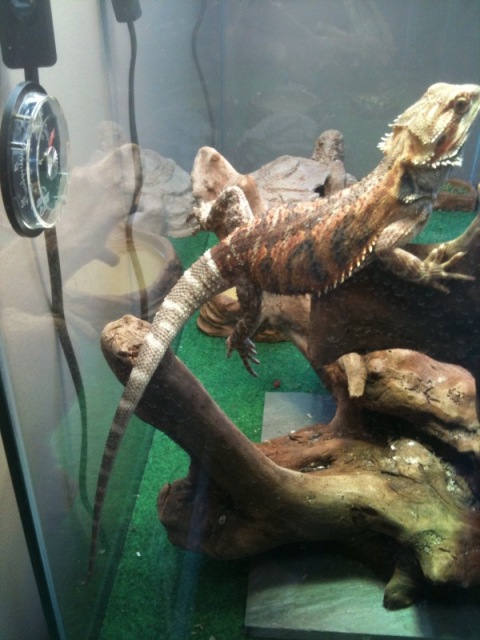 bearded dragon tail turned white
QuestionBDs white tail
QUESTION: My 8 month old
bearded dragon tail turned white
QuestionBDs white tail
QUESTION: My 8 month old
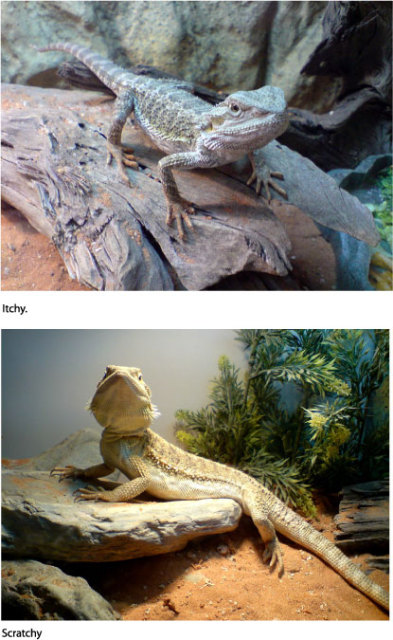 bearded dragon vs rankin dragon.
QuestionItchy & Scratchy
QUESTION: Hello,
I
bearded dragon vs rankin dragon.
QuestionItchy & Scratchy
QUESTION: Hello,
I
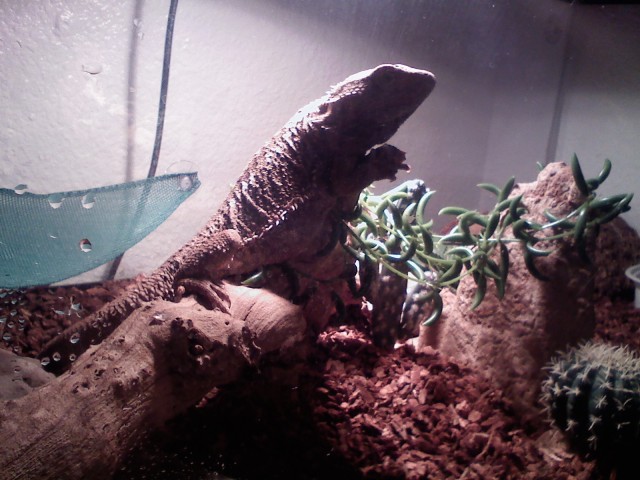 rescued a beardie
Question
kittie our bearded dra
we got two bearded drag
rescued a beardie
Question
kittie our bearded dra
we got two bearded drag
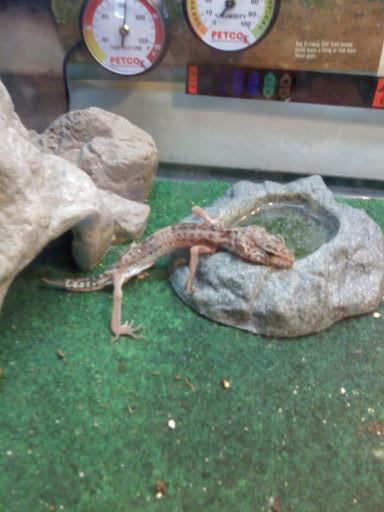 rescued skinny leo gecko
Question
skinny gecko
PLS Help.. I asked this same ques
rescued skinny leo gecko
Question
skinny gecko
PLS Help.. I asked this same ques
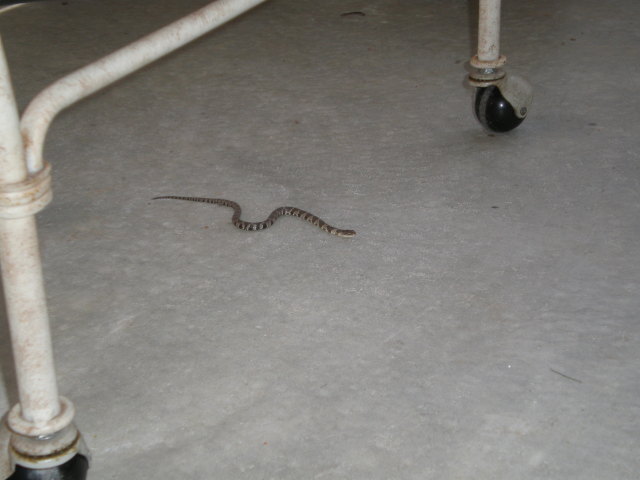 snake on patio
QuestionUnidentifed snake on p
QUESTION: I found
snake on patio
QuestionUnidentifed snake on p
QUESTION: I found